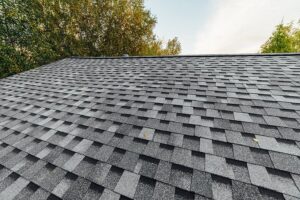Everything You Need to Know About Rain Gutters: Protecting Your Home from the Top Down
When was the last time you looked up at your rain gutters? If you’re like most homeowners, the answer is probably “not recently.” Yet these humble channels attached to the edge of your roof play a crucial role in protecting your home from water damage. From preventing soil erosion to guarding your foundation, rain gutters are an unsung hero of home maintenance. In this post, we’ll explore why gutters matter, the different types available, how to maintain them, and why investing in a good gutter system is one of the smartest things you can do for your home. You could look here at rain gutter installation tips to ensure proper drainage and avoid costly water damage.

What Are Rain Gutters and Why Are They Important?
Rain gutters are long, narrow troughs installed along the edges of a roof. Their main function is to collect and channel rainwater away from the home’s foundation. Without them, water would pour off the roof, causing a cascade of issues including:
Soil erosion near the foundation
Basement flooding
Damaged siding and windows
Mold and mildew buildup
Cracks in the foundation
In short, a working gutter system helps preserve the structural integrity of your home.
Types of Rain Gutters
There are several types of gutters available, each with its pros and cons:
K-Style Gutters:
The most popular style in North America, K-style gutters resemble crown molding and are typically made from aluminum. They’re known for their durability and aesthetic appeal.
Half-Round Gutters:
Shaped like a half-pipe, these gutters are often used on historic or traditional homes. They are less prone to clogging but don’t carry as much water as K-style gutters.
Box Gutters:
These are built into the edge of the roof or the structure itself, making them nearly invisible. They’re common in commercial buildings and older homes but can be expensive to repair.
Seamless Gutters:
Custom-made from a single piece of material, usually aluminum, seamless gutters are less likely to leak and require less maintenance.
Gutter Materials: What Should You Choose?
Rain gutters can be made from various materials, each with different characteristics:
Aluminum: Lightweight, rust-proof, and affordable. It’s the most common gutter material for a reason.
Vinyl: Inexpensive and easy to install, but not as durable in extreme temperatures.
Copper: Extremely durable and visually striking. However, it’s one of the most expensive options.
Steel: Strong and long-lasting, but prone to rust without proper treatment.
Zinc: Durable and corrosion-resistant, though costlier and less commonly used.
Your choice will depend on your climate, budget, and the aesthetic you’re aiming for.
Gutter Maintenance: A Small Effort for Big Protection
Gutters need regular maintenance to function effectively. Neglecting them can lead to costly repairs down the road.
Here are some key tips:
Clean your gutters at least twice a year (spring and fall).
Remove leaves, twigs, and debris to prevent clogs.
Check for leaks and sagging sections.
Ensure downspouts are directing water at least 4–6 feet away from your foundation.
Consider installing gutter guards to reduce debris buildup.
If your home is surrounded by trees, you may need to clean them more often or invest in a leaf protection system.
Signs Your Gutters Need Repair or Replacement
A faulty gutter system can sometimes be worse than having no gutters at all. Look out for these warning signs:
Water stains on siding or fascia boards
Sagging or pulling away from the roofline
Rust or cracks
Pooling water near the foundation
Gutters overflowing during rain
If your gutters are older than 20 years or showing multiple signs of failure, it may be time for a full replacement.
Are Gutters Worth the Investment?
Absolutely. Although installing or replacing gutters can cost anywhere from a few hundred to several thousand dollars depending on the material and house size, the long-term benefits far outweigh the cost. A good gutter system:
Prevents foundation damage (which can cost tens of thousands to fix)
Protects landscaping
Preserves your home’s exterior
Reduces risk of mold growth
In real estate, well-maintained gutters also signal to buyers that the home has been properly cared for, potentially increasing resale value.
Eco-Friendly Gutter Upgrades
Looking to make your gutter system greener? Here are a few eco-conscious upgrades:
Rain Barrels: Collect water from downspouts to use for watering plants.
Rain Chains: A decorative alternative to downspouts that slows water flow and reduces erosion.
Gutter Guards: Reduce debris and maintenance, which means fewer resources spent on repairs.
Rain gutters might not be the most glamorous part of your home, but they’re among the most vital. Regular maintenance, smart material choices, and timely repairs can save you significant money and stress in the long run. Whether you’re building a new house or upgrading your current one, don’t overlook the importance of a high-quality gutter system. It’s one of the best investments you can make to protect what matters most—your home.
